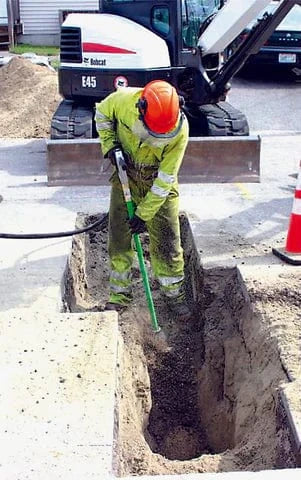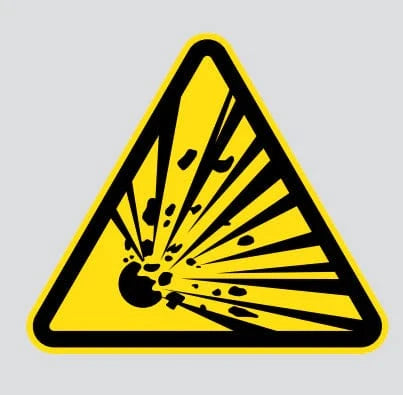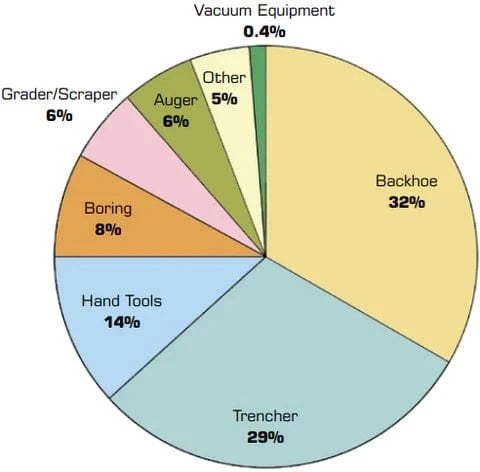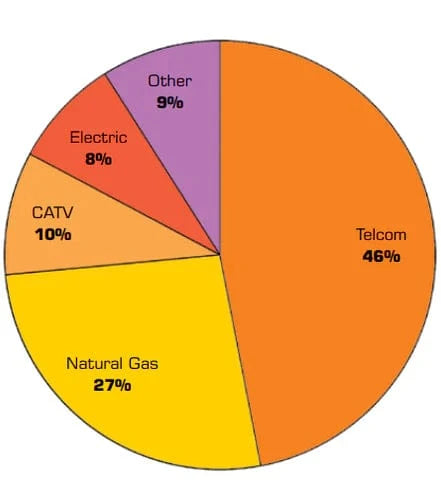
When it comes to underground utility lines, what you can’t see can hurt you. The Common Ground Alliance (CGA), an association that promotes efforts to reduce damage to underground infrastructure, estimates there are over 20 million miles of gas, electric, water, sewer and telecommunication lines buried in the United States. That’s the equivalent of more than one football field length of buried utilities for every man, woman, and child in the nation.
Digging without knowing the location of underground utilities can lead to injuries and fatalities, property damage, service disruptions and costly repairs. Consequently, utility companies and contractors go to great lengths to ensure employees are taking necessary safety precautions when working around underground utility infrastructure. Still, incidents continue to occur. According to the U.S. Department of Transportation, 1,815 pipeline incidents were caused by excavation damage between 1988 and 2014. These incidents resulted in 193 deaths, 757 injuries and nearly $545 million in property damage.
Among the incidents involving underground utility strikes in recent years:

On June 7, 2010, a truck-mounted power auger punctured a 36-inch-diameter natural gas transmission line near Cleburne, TX. The operator was digging holes for the installation of new electric-service utility poles. The natural gas ignited, killed the auger operator and burned six workers. Total property damage and cleanup costs were estimated to be over $1 million.

On January 3, 2013, in Minneapolis, MN, workers attempting to run a sewer line struck a 36” water main with a backhoe causing 14 million gallons of water to flood the downtown area. Called Minneapolis’ largest water leak in 30 years, the repair costs alone were estimated at $325,000. No doubt, the repair costs were small in comparison to the millions of dollars in water damage to adjacent businesses.

On August 20, 2014, a 38-year-old worker in Edmonds, WA, died when his jackhammer struck a 7,200-volt underground power line. On the day of the incident, the worker and two other employees were digging trenches and installing storm drains on a hospital campus. According to a news report, the incident also temporarily cut power to the hospital and some residents in the surrounding area. The Washington State Department of Labor & Industries levied over $50,000 in fines to two contractors for safety violations related to the fatal accident.
UNDERGROUND UTILITIES
DAMAGE EVENTS BY EQUIPMENT
2017

While each incident has a unique set of circumstances and sequence of events, in all the above cases, hard excavation methodologies – excavation with augers, backhoes, or power tools – were used at the time of the strike. According to the CGA 2017 DIRT (Damage Information Reporting Tool) Report which collects annual data on inadvertent damage to underground utilities caused by excavation, 318,030 strikes were recorded nationwide. By an overwhelming margin, hard excavation was responsible for over 99.6% of all damage events.
UNDERGROUND UTILITIES
DAMAGED
2017

By contrast, soft excavation – vacuum equipment augmented with compressed air or high-pressure water (hydro) to loosen the soil – was responsible for less than a 0.4% accident rate. While not suitable for all projects, soft excavation has proven by far to be the safest way to expose underground utilities. Thus, it’s easy to see why many leading utilities and utility contractors are big proponents. By utilizing state-of-the-art equipment, such as vacuum equipment paired with the Utility AirSpade by Guardair Corporation, soft excavation is fast becoming a preferred methodology.
To learn more about the use of compressed air-powered excavation for utility/construction work, see the full Utility Technical Applications Bulletin.
